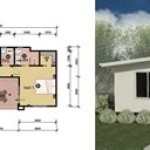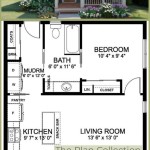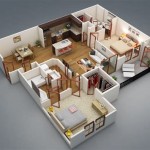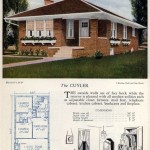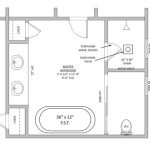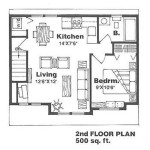Small House Plans With Loft: Maximizing Space and Style
The allure of the small house continues to grow, driven by factors ranging from affordability and environmental consciousness to a desire for simpler, more intentional living. Within the realm of compact dwellings, small house plans with lofts offer a particularly compelling proposition. They provide a creative solution for maximizing space, adding vertical dimension, and introducing a unique architectural element that enhances both functionality and aesthetic appeal. The popularity of lofted small house designs stems from their ability to effectively address the limitations of a small footprint while offering diverse design possibilities.
These designs are well-suited for individuals, couples, or small families seeking an efficient and stylish living space. The loft area can serve various purposes, such as a bedroom, home office, reading nook, or storage space. Integrating a loft into a small house plan allows for a separation of living and sleeping areas without significantly increasing the overall square footage. The strategic use of vertical space also creates a sense of openness and airiness, counteracting the potential claustrophobia often associated with small homes. This article will explore the key considerations, benefits, and design principles involved in planning a small house with a loft, providing a comprehensive understanding of this increasingly popular housing option.
Key Considerations Before Implementing a Loft Design
Before embarking on a small house plan with a loft, several crucial factors must be carefully considered to ensure the design meets the long-term needs of the occupants. Failing to address these points early in the planning process can lead to costly revisions and potential dissatisfaction with the final product.
Building Codes and Regulations: Local building codes and regulations are paramount. Loft spaces may be subject to specific requirements regarding ceiling height, egress (emergency exits), fire safety, and ventilation. Minimum ceiling heights are vital for comfort and usability. Codes often specify a minimum clear height of 7 feet for habitable spaces. In loft areas, this requirement may apply to a significant portion of the space to ensure it qualifies as a usable living area. Egress is equally crucial. Lofts intended as bedrooms must typically have a secondary means of escape, such as a window large enough for evacuation, or a dedicated fire-rated staircase. Fire safety regulations may also mandate the installation of smoke detectors and fire-resistant materials. Thorough research and consultation with local building authorities are essential to ensure compliance and avoid potential legal issues.
Accessibility and Age-in-Place Design: While lofts offer efficient space utilization, their accessibility can be a significant concern. Climbing stairs or ladders to access the loft area may not be suitable for everyone, particularly individuals with mobility limitations or older adults. Consider the long-term needs of the residents and the potential for aging in place. If accessibility is a priority, alternative solutions such as a ramp or even a small elevator (although space-intensive) might be necessary. If a purely age-in-place design is the goal, a loft plan might not be the most effective solution. However, even with a loft, the main living areas and at least one bedroom should be accessible on the ground floor to accommodate potential future needs.
Structural Integrity and Load-Bearing Capacity: The structural integrity of the house is critical, especially when adding a loft. The existing structure may need reinforcement to support the additional weight of the loft and its contents. Consult with a qualified structural engineer to assess the load-bearing capacity of the walls and foundation. The engineer can provide recommendations for necessary modifications, such as adding support beams or reinforcing the foundation. The loft floor itself must also be designed to withstand the anticipated load, taking into account the weight of furniture, occupants, and stored items. Overlooking these structural considerations can compromise the safety and stability of the entire home.
Benefits of Incorporating a Loft into a Small House Plan
The inclusion of a loft in a small house plan yields multiple advantages, contributing to both the functionality and the overall living experience within a compact dwelling. These benefits explain the sustained popularity of lofted small house designs.
Maximizing Vertical Space and Creating Distinct Zones: A primary benefit of a loft is its efficient utilization of vertical space, effectively expanding the usable area of a small house without increasing the footprint. In situations where land is scarce or expensive, maximizing the vertical dimension is a cost-effective way to gain additional living space. The loft creates a distinct zone that can be designated for various purposes. It can serve as a private bedroom, separating the sleeping area from the main living space. Alternatively, it can function as a home office, providing a dedicated workspace away from the distractions of the common areas. The loft can also be used as a reading nook, a studio, or simply as a storage area, depending on the needs of the occupants. This zoning capability helps to create a more organized and functional living environment.
Enhancing Natural Light and Ventilation: Strategically placed windows in a lofted small house can significantly enhance natural light and ventilation throughout the entire structure. The loft can act as a conduit for sunlight, allowing it to penetrate deeper into the living spaces below. High windows or skylights in the loft can capture more daylight, reducing the need for artificial lighting and creating a brighter, more welcoming atmosphere. Similarly, well-positioned windows in the loft can promote cross-ventilation, improving air circulation and reducing the reliance on air conditioning. This natural ventilation can contribute to a healthier and more comfortable indoor environment, while also lowering energy consumption.
Adding Architectural Interest and Visual Appeal: A loft adds a unique architectural element to a small house, enhancing its visual appeal and creating a sense of character. The exposed beams, angled ceilings, and the view from the loft provide a distinct aesthetic that sets it apart from conventional small house designs. The loft can be designed in various styles, from rustic and cozy to modern and minimalist, depending on the overall design theme of the house. The staircase or ladder leading to the loft can also be a design feature in itself, adding to the visual interest of the space. The loft's presence breaks up the monotony of a single-level design and creates a more dynamic and engaging living environment. High ceilings, possible with a loft design, also contribute to a sense of spaciousness, counteracting the feeling of being confined in a small area.
Design Principles for Effective Loft Integration
Successful integration of a loft into a small house plan requires adherence to certain design principles to ensure functionality, comfort, and aesthetic harmony. Thoughtful planning and attention to detail are essential for maximizing the potential of this unique architectural feature.
Staircase or Ladder Design and Placement: The design and placement of the staircase or ladder leading to the loft are crucial considerations. The choice between a staircase and a ladder depends on factors such as space availability, accessibility requirements, and personal preference. A staircase offers greater stability and ease of use, especially for older adults or individuals with mobility issues. However, it occupies more floor space than a ladder. A ladder is a more space-efficient option, but it may not be suitable for everyone. The staircase or ladder should be strategically placed to minimize disruption to the flow of the living space and to maximize usable area. Consider incorporating storage space within the staircase design to further optimize space utilization. Building codes often dictate minimum tread depth and riser height for staircases, ensuring safety and comfort.
Loft Height and Headroom Considerations: Adequate headroom is essential for comfort and usability in the loft area. Insufficient headroom can make the space feel cramped and uncomfortable, limiting its functionality. Building codes typically specify minimum ceiling heights for habitable spaces, but it's essential to consider the specific needs of the occupants. For a loft intended as a bedroom, a minimum ceiling height of 7 feet is generally recommended to allow for comfortable standing and movement. In areas where people primarily sit or lie down, such as a reading nook or a sleeping area, a lower ceiling height may be acceptable. However, sufficient headroom is still necessary to avoid a feeling of confinement. Carefully plan the loft height to ensure adequate headroom without compromising the overall proportions of the house.
Lighting and Ventilation Strategies: Effective lighting and ventilation are critical for creating a comfortable and inviting loft space. Natural light is highly desirable, and strategically placed windows or skylights can maximize its availability. Consider the orientation of the house and the angle of the sun when positioning windows to optimize natural light capture. In addition to natural light, artificial lighting is essential for providing illumination during evenings and nighttime. Choose lighting fixtures that are appropriate for the intended use of the loft, such as task lighting for a home office or ambient lighting for a bedroom. Ventilation is equally important for maintaining air quality and preventing moisture buildup. Windows that can be opened for cross-ventilation are ideal. If natural ventilation is limited, consider installing a ceiling fan or an exhaust fan to improve air circulation. Proper ventilation is essential for preventing mold and mildew growth, especially in humid climates.

Small Cabin Designs With Loft Floor Plans House Plan

Small Cabin House Plans With Loft And Porch For Fall Houseplans Blog Com

Small Cabin House Plans With Loft And Porch For Fall Houseplans Blog Com

Small Cottage Floor Plan With Loft Designs House Plans Homes

Small Cottage Floor Plan With Loft Designs

10 Unique Plans Of Tiny Homes And Cabins With Loft Craft Mart

10 Small House Plans With Open Floor Blog Homeplans Com
Small Cabin House Plans With Loft And Porch For Fall Houseplans Blog Com

Tiny House Floor Plan With Bedroom Loft

Small Cabin Designs With Loft Floor Plans

